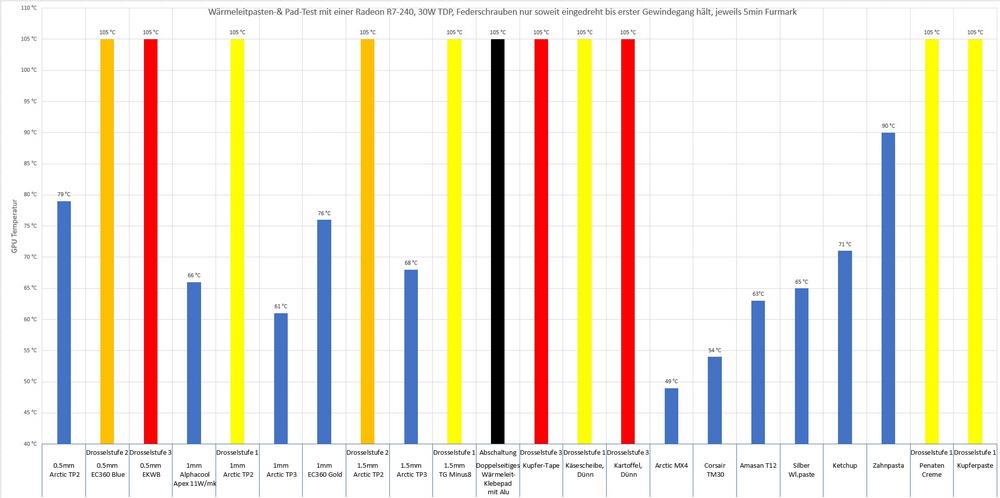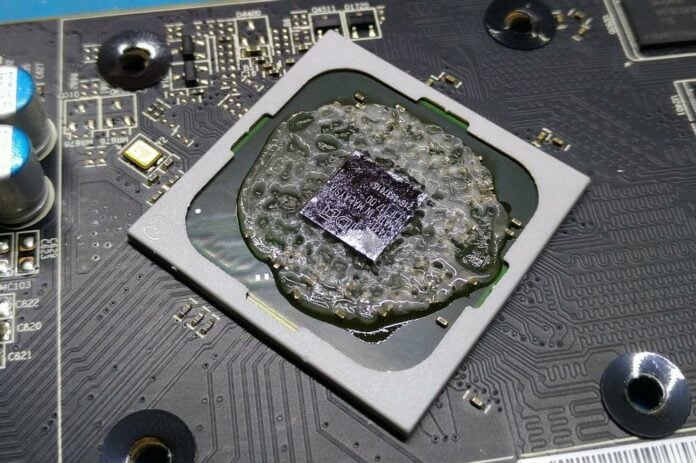Seeing as liquid metal isn’t always the best bet, what else would make for a competent replacement to proper thermal paste? Good question, and if for whatever reason you’ve contemplated kitchen condiments, the Internet community has dished up some entertaining answers.
While clearly not the first time someone has attempted to find a replacement for thermal paste, be it due to a lack of real paste or just for a bit of fun, as far as we know, no one has tried to substitute a purposely built thermal interface with cheese, until now. Must have smelled nice, grilled cheese, though you’ll have to resist the temptation to add Worcestershire sauce to the mix.
Thanks to the efforts of AssassinWarlord (from computerbase), we know that even using a low-power Radeon R7 240 GPU which consumes about 30W, replacing proper thermal paste with something that looks like it isn’t straightforward.

The graphics card in question is said to have three levels of thermal throttling beyond 105°C, the first lowers the clock to 730Mhz at 1,050V, the second to 400Mhz, and the third to 300Mhz, after which the machine shuts down to protect the hardware. By default, the GPU runs at 780Mhz with 1,150V.
According to the tests, the highest temps were recorded using thermal pads or weird items like copper tape and potato/cheese slices. Yet among all the items, we find none other than good ol’ Ketchup managing a respectable 71°C. Toothpaste returned 90°C, and going appreciably lower naturally requires something like 1mm Alphacool Apex 11W/mk pads or Corsair’s TM30 paste. But the proper winner without a doubt is Arctic MX4 thermal paste which maxed temperatures at 49°C.

Before reaching for your bottle of Heinz, do be aware that Ketchup or any other unintended material found to adequately transfer heat may not do so indefinitely. Real thermal paste is made with durability and thermal cycling in mind, so users can go years without having to think about it. some hardware even dies before the paste is in a bad enough state.
Finally, it goes without saying that these tests are first and foremost a little bit of light entertainment. However, they highlight how effective and purposely engineered proper thermal pastes are. They also show that even in extreme circumstances, it’s better to wait a few days to get a real paste than trying to makeshift a replacement from items found inside the fridge.


